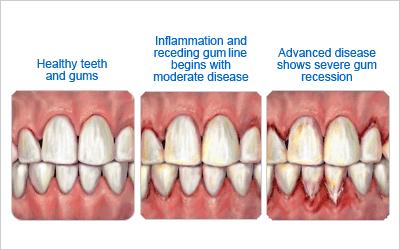
In the realm of dentistry, there exists a silent menace that often goes unnoticed until it’s too late: periodontal disease. This insidious condition wreaks havoc on the gums and supporting structures of the teeth, leading to discomfort, tooth loss, and even systemic health issues if left unchecked. Understanding the nuances of periodontal disease is crucial for maintaining optimal oral health and overall well-being.
The Origins of Periodontal Disease
Periodontal disease, often referred to simply as gum disease, is a multifactorial condition with roots that extend far beyond poor oral hygiene alone. While inadequate brushing and flossing certainly play a role, factors such as genetics, smoking, hormonal changes, and systemic diseases like diabetes can also contribute to its development. Understanding these risk factors is essential for both prevention and treatment.
The Role of the Periodontist
Enter the periodontist, a specialized dental professional with expertise in the prevention, diagnosis, and treatment of periodontal disease. Unlike general dentists, periodontists undergo additional years of training focused specifically on the gums and supporting structures of the teeth. Armed with advanced knowledge and techniques, they are equipped to address even the most complex cases of gum disease with precision and skill.
Diagnosis: The First Step Toward Healing
Diagnosing periodontal disease requires a comprehensive evaluation of the patient’s oral health, including a thorough examination of the gums, teeth, and supporting bone structures. This typically involves measuring the depth of periodontal pockets, assessing tooth mobility, and evaluating X-ray images for signs of bone loss. By accurately diagnosing the extent and severity of the disease, the periodontist can develop a customized treatment plan tailored to the patient’s needs.
Treatment Modalities: From Scaling to Surgery
Treatment for periodontal disease can vary widely depending on its stage and severity. In its early stages, non-surgical interventions such as scaling and root planing may be sufficient to remove plaque and calculus from the surfaces of the teeth and promote gum healing. However, advanced cases may require surgical interventions such as flap surgery, bone grafting, or guided tissue regeneration to restore lost tissue and stabilize the teeth. The periodontist carefully evaluates each patient’s condition to determine the most appropriate course of action.
The Importance of Ongoing Maintenance
While periodontal treatment can effectively halt the progression of gum disease, ongoing maintenance is essential for long-term success. This typically involves regular visits to the periodontist for professional cleanings and thorough examinations, as well as diligent oral hygiene practices at home. By staying proactive and vigilant, patients can minimize the risk of disease recurrence and preserve their oral health for years to come.
Beyond the Mouth: The Systemic Impact of Periodontal Disease
In recent years, researchers have uncovered compelling evidence linking periodontal disease to a host of systemic health issues, including cardiovascular disease, diabetes, and respiratory infections. The inflammation and bacterial burden associated with gum disease can trigger systemic inflammation and compromise immune function, setting the stage for these chronic conditions to take hold. By addressing periodontal disease early and effectively, patients can potentially reduce their risk of developing these serious health problems.
A Call to Action: Prioritizing Periodontal Health
In light of the profound impact that periodontal disease can have on both oral and systemic health, prioritizing periodontal health is more important than ever. By partnering with a skilled periodontist and adopting a proactive approach to oral hygiene, individuals can safeguard their smiles and promote their overall well-being for years to come. Don’t wait until it’s too late – take action today to protect your gums, your teeth, and your health.
